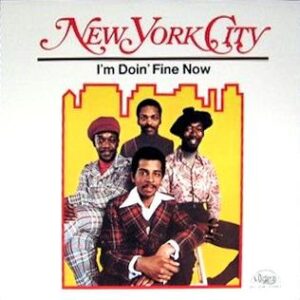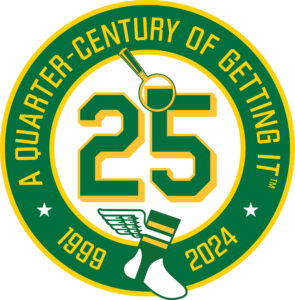The Mets ain’t too bad when they wear either their classic home pinstriped uniforms (10-7) or their road grays (9-8). They’re godawful when they wear anything else. Four losses with no wins in the City Connects. Two losses with no wins in the fade-to-blacks. And now, with the belated arrival of the white pants that enabled them to don their blue jerseys, they’ve been unable to win in another shade.
The Mets put on their blues Tuesday afternoon and immediately came down with a fresh case of them, falling to the Phillies, 4-0. Aaron Nola pitched a shutout. I wasn’t rooting for him to prevail, but once it became intrinsically apparent the Mets weren’t going to conjure one of their intermittent last-out revivals, I perversely hoped the Seaver-tying bastard would go the distance. You’re gonna lose, you might as well lose to a single pitcher rather than a parade of relievers.
The Mets seem to embrace alternate jerseys and the 0-7 karma that comes with them. Not losing would be a better alternative. No doubt the winlessness when they dig deep into their closet is a coincidence. Still, the sample size has gotten larger and my desire to pick apart another loss that involves the Mets not coming through in any aspect of their most recent game is minute. So let’s pull on these threads.
The Mets introduced the blue tops in 2013. I was at the holiday luncheon at which Ike Davis and R.A. Dickey modeled them the preceding December. Dickey was traded soon later. Maybe that’s why I’ve never fully cottoned to those shirts. I should, I guess. They’re royal blue and the orange is prominent. Can’t say they don’t evince Metsiness. Yet something about them tries too hard. Look! Fun! Really! Matt Harvey really enjoyed wearing them when he was on the mound, including the night he carried his own shutout into the ninth inning in the World Series. Yet another association that works against them.
Despite the dismality inherent within the latest incarnation of black Mets jerseys, I wasn’t fire-and-brimstone traditionalist during their initial dark reign; I was super happy to see them in the first years of the new century and think of Robin Ventura grand-slam singling. I agreed with the consensus that they were tired by the time Shea Stadium gave way to Citi Field and didn’t miss them once they were altogether deleted in 2012. I was OK with their nostalgic return in 2021. The new ones should go down a black hole.
The City Connects, which display a certain sharpness from just the right angle (like when one of the caps is hanging on a hook by a player’s locker during an interview and I’m taken by the purple button), bug me mostly for the “NYC” on the chest. I referred to New York City when I was eight years old. My father, who could claim a tangible connection to four of five boroughs — born in the Bronx, raised in Queens, spent the first decade of his married life in Brooklyn, built a business in Manhattan — corrected my usage: “It’s New York. Only tourists say New York City.” Good enough for me. Unless I’m humming lyrics belonging to Odyssey, Lou Reed or Climax Blues Band (or requesting I’m Doin’ Fine Now), I keep my New York references to two words.
Instead of “NYC” and the whole bit about how we have subways and sidewalks, I would have led with “NYM” as the wordmark and made the requisite storytelling about something more than the city, because the Mets and New York connect to so much more than the city limits.
Get a celebrity whose voice is easily identified as genuinely Metsian. Have that person read something along the lines of…
Biggest city in the country. Most mammoth Metropolitan area, too.
We’ve got boroughs. We’ve got the longest of Islands. We encompass three states.
The beautiful part of being from here, moving to here, or simply loving it here is how much you get to choose from here. The best food, according to YOU. The fashion you decide looks best on YOU. The field that is indisputably YOUR field. You decide who you want to be and what you want to be about. You are an individual among millions.
Yet just because you don’t go along with the crowd doesn’t mean you’re all alone here. In the New York Metropolitan Area, you’ve got neighbors; you’ve got community, you’ve got teammates.
The passion belongs to you.
And you.
And you.
There’s nothing quite like knowing you’re in this thing together…and that your team isn’t only YOUR team.
(Interject with a few fans.)
My team.
My team.
My team.
(Back to our celebrity v/o.)
You connect with your team, your teammates, and the entire Metropolitan Area. If you happen to be in a hurry — you are, after all, in and around New York — you can express that feeling in three quick letters.
NYM.
We know what that stands for.
Our home. Our team.
Just let somebody try to tell us different.
“NYM” would have been about the Mets and the mindset of those who’ve chosen to forge their bond with this franchise and its other acolytes. They could have done the purple and the gray and whatever. I would have changed one letter. It would have been ours. We would have been happy to share.
Uni-Watch turns 25 later this month, meaning Paul’s been on his beat for a quarter-century. He’s decided that’s enough monitoring stirrups for now. Paul will retire from the everyday of Uni-Watch, handing the keys to his friend and collaborator Phil Hecken. I’ve met Phil and read Phil and know he’ll keep a great thing top-notch. But I’m gonna miss Paul in the realm he’s constructed because he’s one of a kind. He’s provocative, evocative and authentic every time he posts. His 2020 column for the New Republic, on what he calls blue collar “cosplay” by professional sports teams, stays with me. Every time some announcer (including those who announce Mets games) lauds a player as “blue collar” because he went from first to third on a single, it gets on my nerves, as if anybody who ever worked wearing anything else is a lollygagger. My dad put on a suit and took a very early train into New York — just New York — every morning for decades. He came home kind of late and was usually tired. What was his work ethic?
That’s not exactly the point Paul was making, but he really nailed something that had been irking me forever about sports. He’s done that so often, all while delivering news nobody before him considered news. Plus, based on the several times we’ve crossed paths, he’s a helluva sweet guy, unfailingly kind to this correspondent and this blog. Mets fan, too. He once told me that when he was a kid going to Shea, he rooted for the Mets, on those occasions when they were winning in the ninth inning, to blow their lead so he could stick around for extras. I found that a little nuts, but knowing he’s ending his regular Uni-Watch role, I sort of wish somebody would mandate that he has to keep playing in his field.
Really, I hope Paul Lukas enjoys himself and his next endeavors. But he should know he’s incredibly appreciated for what he’s created.









Blues? I was seeing red…
Really appreciate the kind, thoughtful words, Greg. Thanks so much for that, and for all the grace and wisdom you’ve provided on this site over the years. I’m proud that we root for the same team.
I love “I’m Doin Fine Now,” and have it on my Fantastic22 album from 1973, I believe, along with other gems as “Crocodile Rock” by Elton John, “The Night the Lights Went Out in Georgia,” by Vicki Lawrence, and “I Wanna Be With You” by The Raspberries. Had no idea Eric Carmen was the lead singer.
And, oh yeah, the Black uniforms suck and anyone who buys one is a Rube, and I don’t mean Walker.